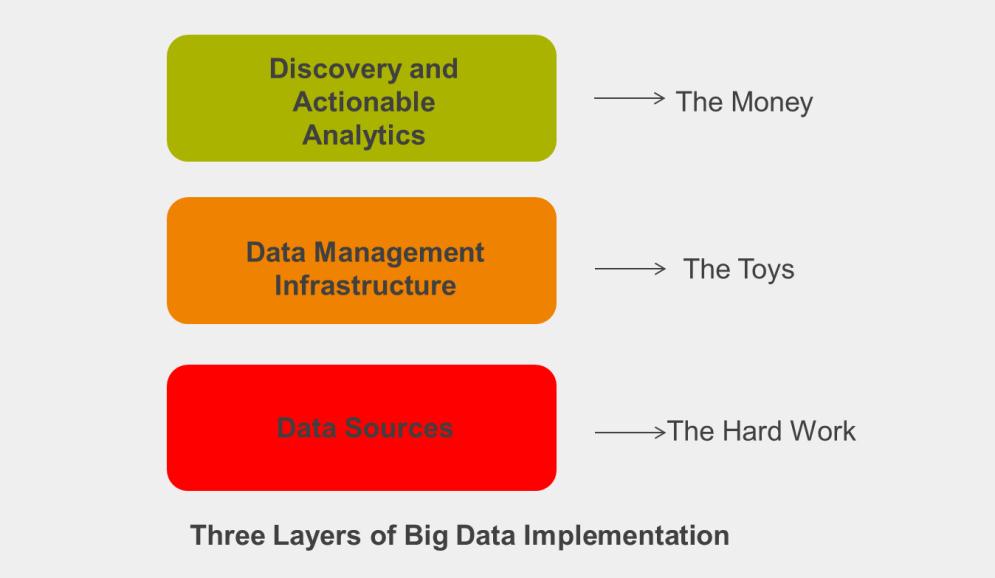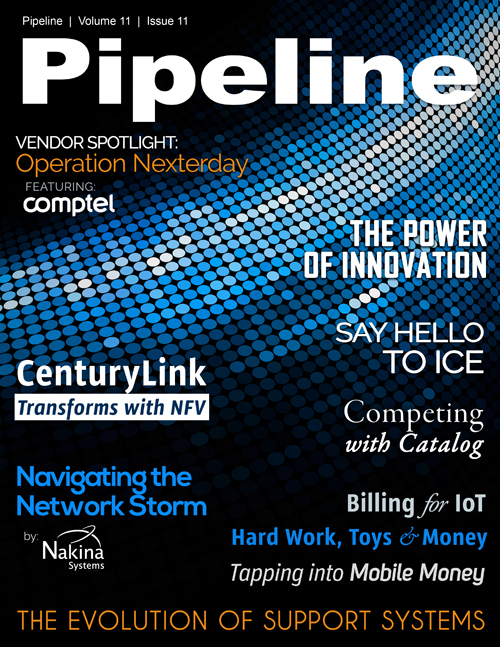Rx for better customer experience? Hard Work, Toys and Money
By: Matthew Roberts
 It’s taken a while, but service providers have finally come to understand that they have to deal with the reality of Big Data. Developing data lakes and supporting infrastructure have taken all
their attention so far. The focus now needs to shift to the daunting task of extraction and cleaning and using data science to deliver actionable insights to service providers’ users and
systems.
It’s taken a while, but service providers have finally come to understand that they have to deal with the reality of Big Data. Developing data lakes and supporting infrastructure have taken all
their attention so far. The focus now needs to shift to the daunting task of extraction and cleaning and using data science to deliver actionable insights to service providers’ users and
systems.
Thomas Edison’s famous quote, "Genius is 1 percent inspiration – and 99 percent perspiration,” could be aptly applied to the situation that service providers find themselves in as they consider their Big Data strategy. While significant progress has certainly been made, there are many complex, labor-intensive activities that still need to be considered to bring Big Data benefits to life – not simply to deliver cost benefits, but to impact the customer experience in ways that are only now beginning to come into focus.
Today, statistics support the fact that businesses which invest in cross-company data aggregation and then leverage modern machine learning to derive competitive insights are capable of making better business decisions and adjusting to meet key performance metrics. Many are forecasting that companies which do not make the transition to a data-driven business have a high probability of losing their competitive advantage and will struggle to survive.
As Gartner has predicted, an average service provider could potentially generate $300 million a year in additional margins through successful analytics. Companies that are more data driven are 5 percent more productive and 6 percent more profitable according to McKinsey. Becoming a true data-driven organization isn’t just about installing and integrating new infrastructure. The problem is much more complex.
The route to success is beset with three distinct challenges. To articulate these challenges, we have simplified and segmented Big Data analytics (BDA) into three "layers".

The Hard Work
The bottom layer is where CIOs and CTOs face the big challenges of extracting data from a myriad of disparate systems. This problem is complex, time consuming and fraught with data inconsistencies. Without the help of the service providers’ vendor community, the probability of getting the data out of these systems and hydrating their lake with clean, actionable data is very low. Often service providers depend on third-party integrators to perform this function, but the integrators are not intimately familiar with the data as it is obfuscated in various operational and network systems. We are seeing the dawn of a new trend where service providers are reverting back to the source vendors to extract and clean this data in a reliable and real-time fashion in order to better service the rest of the organization. It has been proven time and time again that relying on your core systems vendors for this task is a much safer path to hydrate a CIOs data management infrastructure with clean, "analytics ready" data.
The Toys
The majority of Big Data projects to date have focused on the sexy, new technologies which store and process this data. Although we call this layer "the toys," this is not to denote that these systems are trivial or simple – far from it. There is huge industry investment and some of the brightest brains working on new storage and streaming technologies. The result is that this open source software is both very vibrant and very confusing – a virtual circus of options. If not managed carefully, it can be a big distraction to the end goal of adding value.



















